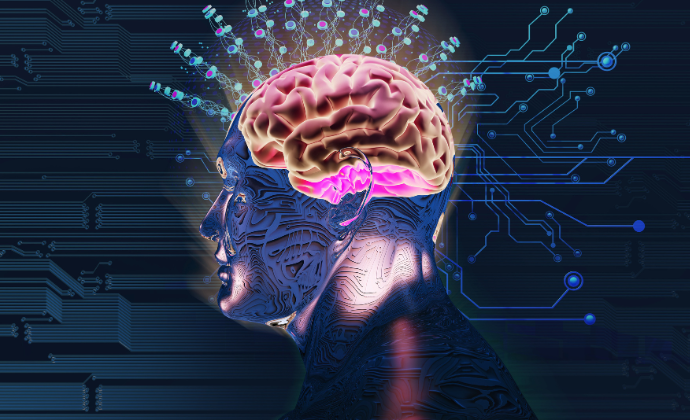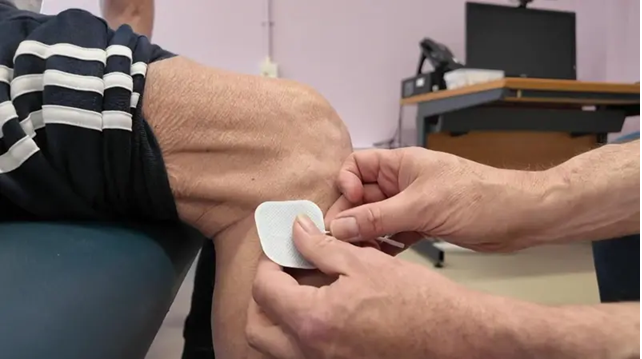What New ‘Brain in Motion’ Technology can Reveal About Parkinson’s

The Salt Path movie
14th May 2025
My [Parkinson’s] Life – Danielle McCarthy
14th May 2025What New ‘Brain in Motion’ Technology can Reveal About Parkinson’s

What New ‘Brain in Motion’ Technology can Reveal About Parkinson’s
How ground-breaking medical imaging is helping EU-funded researchers monitor brain activity during movement – and what this could mean for diagnosing and treating Parkinson’s.
Neuroimaging has made huge strides in trying to demystify the human brain, but there’s still so much to discover. While most studies have been conducted under stationary conditions – usually with the participants lying down – a three-year research initiative is taking a more dynamic approach.
The EU-funded TwinBrain – ‘Twinning the brain with machine learning for neuro-muscular efficiency’ – project, coordinated by Slovenian scientists, has developed game-changing technology to monitor a patient’s brain activity while they move around their environment.
The brain is a powerful multitasker, working hard behind the scenes while we all get on with our daily lives. But it’s exactly this type of day-to-day brain activity which TwinBrain is keen to explore further.
Investigating what is going on in the brain as we walk, balance or run has been a big challenge for neuroscientists. However, innovative new technology developed by the TwinBrain project now makes it possible to monitor new areas of the brain while in movement.
The brain in motion
Led by Dr Uroš Marušič, senior research associate at the Science and Research Centre in Koper, Slovenia, and head of the Slovenian Mobile Brain/Body Imaging Lab – SloMoBIL, the TwinBrain research has been studying the brain during everyday activities, with the hope of picking up the early signs of disorders that affect brain-to-body coordination, like Parkinson’s.
The initiative has been a global collaboration, bringing together researchers from the Technical University of Berlin in Germany, the University of Trieste in Italy and the University of Geneva in Switzerland.
Together they have developed cutting-edge technology called mobile brain/body imaging (MoBI). This advanced imaging allows specialists to monitor the brain and body movement simultaneously, making it possible to spot any signs of neurological issues and – crucially – start treatments earlier.
The MoBI technology, developed in 2021 in Berlin, combines electroencephalogram (EEG) technology, a test that measures electrical activity in the brain, with electromyography (EMG) which measures muscle response or electrical activity in response to a nerve’s stimulation of the muscle.
Simply put by Dr Marušič, “We can now measure what is going on in the brain while you are walking, running, or doing other types of physical or mental activity.”
As part of the TwinBrain initiative, this MoBI technology was transferred from Germany to Slovenia, while neurologists and researchers from Italy and Switzerland have further enhanced its performance.
What this means for Parkinson’s
The TwinBrain initiative is focused on making strides in the diagnosis and treatment of complex neurological conditions that affect movement, including Parkinson’s.
Speaking to Horizon – the EU research and innovation magazine – Dr. Marušič explains: “In early-stage Parkinson’s, behind the scenes, the brain is compensating for balance and movement deficiencies. This can lead to a person tripping or falling.”
The hope is that MoBI will offer a more comprehensive look at exactly what is going on in the brain during this ‘multi-task’.
Paolo Manganotti, a professor of neurology at the University of Trieste, was involved in the recruitment and testing of volunteers for the TwinBrain study, with 57 participants taking part in MoBI testing since 2021. Manganotti found that participants were very willing to take part to “…help improve outcomes not only for themselves, but also for future patients.”
Speaking to Horizon magazine, Paolo Manganotti said: “TwinBrain offers groundbreaking insights for clinical practice. By integrating the latest technology, we can revolutionise the diagnosis and monitoring of Parkinson’s disease within a few years, increasing patient satisfaction and their quality of life.”
Looking to the future
Dr. Marušič is keen to continue advancing the MoBI technology with on-going research though the TBrainBoost project and new research partners from across Europe.
Ultimately, the aim is for the TwinBrain initiative to result in earlier and more advanced treatment with people living with Parkinson’s and other neurological disorders.
For Dr Marušič this is all about personalised healthcare. Speaking to Horizon magazine, he said, “I want patients to be able to come to one place to address all issues at the same time. Personalised centres offering diagnostics and treatments tailored to your needs – one place that does it all.”
Amelia Hursey, Research Manager for Parkinson’s Europe, is also keen to see how this new technology and research can be used to help with early diagnosis, adding: “Any new technological development that may help us to detect Parkinson’s early is exciting. We hope that the research being done to see if these measures can be used for Parkinson’s as a supportive biomarker are successful.”
To find out more about TwinBrain visit the project website here.
Sources:
Original article by Sarah Dawson
Horizon magazine



